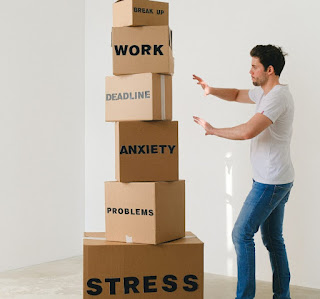Polarized Parts, A Self-Led Project Exercise
Using a bonus exercise from the Self-Led Project program, I work with volunteers Kathleen and Walt to explore their polarized parts.
For a PDF of the exercise, click this link: https://1drv.ms/b/s!ApH0QFAh_aLZhfc-GtVWUVmQDOrMQA?e=OimBDk
To skip past the explanation of the exercise and begin working through the exercise with your polarized parts, go to 9:50 in the video.
For examples of polarizations, go to 10:15 in the video.
To watch me work with Kathleen, go to 20:16 in the video.
To watch me work with Walt, go to 32:50 in the video.
The purpose of this exercise is to learn how to recognize polarized parts and to help them relax so you can respond from Self-leadership.
Sometimes, our parts employ strategies that conflict with the strategies and intentions of other parts.
When their differences create internal conflict and confusion, the result can be overwhelming. Parts that oppose each other to this degree are referred to as polarized parts.
When in a state of conflict and overwhelm, there is no room for the qualities and resources of Self. If you can’t unblend from the influence of these conflicted parts, you will react from the conflict rather than from Self.
For example:
• a people pleasing part and pushing away part
• a financially prudent part and a spending part
• a part that uses addictions to distract and a part that sees addiction as a
weakness
● an approval seeking part and a part that hurts others when attempting to be
funny
Take the following steps to recognize polarizations.
Step 1
Think of a situation when you were highly conflicted. In other words, you felt emotional and found it difficult to make a clear decision or to remain calm. The more recent the better.
For example, George’s wife Anne wanted him to go to a play with him on Sunday afternoon when his favorite football team was playing an important game.
Step 2
Describe the internal conflict.
For example, George felt like he should go to make his wife happy and to prevent her from being upset with him. But he also didn’t want to miss watching the game. When he considered saying yes to the play, he felt upset about missing the game. When he considered saying no to the play and staying home to watch the game, he worried about how Anne would react and was afraid she would be upset with him.
Step 3
Identify the two parts that seemed to have the most at stake in the situation.
For example,
One part wants stay and watch the game.
One part wants to please Anne and go to the play.
Often the opposing parts find that they are both trying to accomplish the same result such as protecting the same burdened exile. By spending time with each of them and getting to know them, they may begin to relax and allow you to lead from Self.
Step 4
A. Ask both parts to relax in turn to allow you to hear from the opposing part without interruption.
a. Consider reviewing the questions you will be asking so that both parts understand what
you are proposing.
B. If either part refuses to relax long enough to allow this, ask:
a. What is the part concerned about?
b. Offer reassurance or accommodate the concern if you can. If you cannot, start with the
part that refuses to relax.
C. If both parts agree to allow you to spend time with the opposing part, just pick the one you are drawn to, that you have the most curiosity about, or the one that seems to want to be heard from first. Once you have a part to start with, ask the following questions.
a. What is important to you about ____________________ (for example, going to the play
or watching the game)
b. What are you afraid, worried, or concerned about if I don’t do as you wish?
c. What do you need regardless of what I decide?
d. If I can address your concerns and meet your needs, would you be able to relax?
D. Ask both parts these questions.
Step 5
If both parts have agreed that they can relax if you address their concerns and meet their needs, take some time to find ways to do this.
If either part refuses to relax regardless of your intention and efforts to help them, recognize that you will need to spend more time with them, learning about their concerns. If this is the case, either ask someone who is trained in the IFS model to help you get to know the part better or refer to one of the other Self-Led Project exercises that are designed to go deeper.





